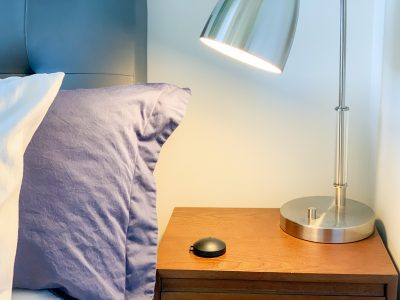Test the air that people are breathing regularly
There is a lot of information out there and sometimes deciding where to place your device can be a difficult decision. The best choice is to not overthink it. You want to test the air you and your loved ones are regularly breathing within the home.
As a general rule, place the device in the lowest level of your home that you or someone else spends about 4 or more hours a day.
This could be your basement, or perhaps the main floor. Do not place the radon test in kitchens, bathrooms, near open windows or other areas with fans or strong airflow. Bedside tables are a great place to test because we spend so much time breathing the air in our bedroom. Areas of the home that no one spends time in (crawl spaces, furnace rooms, etc.) are also not ideal.
Optionally, there is a loop for hanging the device to help keep it safe and unharmed during the testing period. However, do not place them on the floor, or near the ceiling. You want to test the air you breathe.
In Canada, for properties with forced air ventilation (i.e. furnaces), we have documented a 13% decrease in radon when you move up from the basement to the main floor, but no further decrease beyond that. This makes sense as the level of your property in direct contact with the ground will have the highest amount of radon. But if you never use your basement, don’t test there.
Have a unique situation? Need some additional advice? We’re here to help. Email us at [email protected] and we’ll do our best to answer your questions.
Step 4: How long should you wait